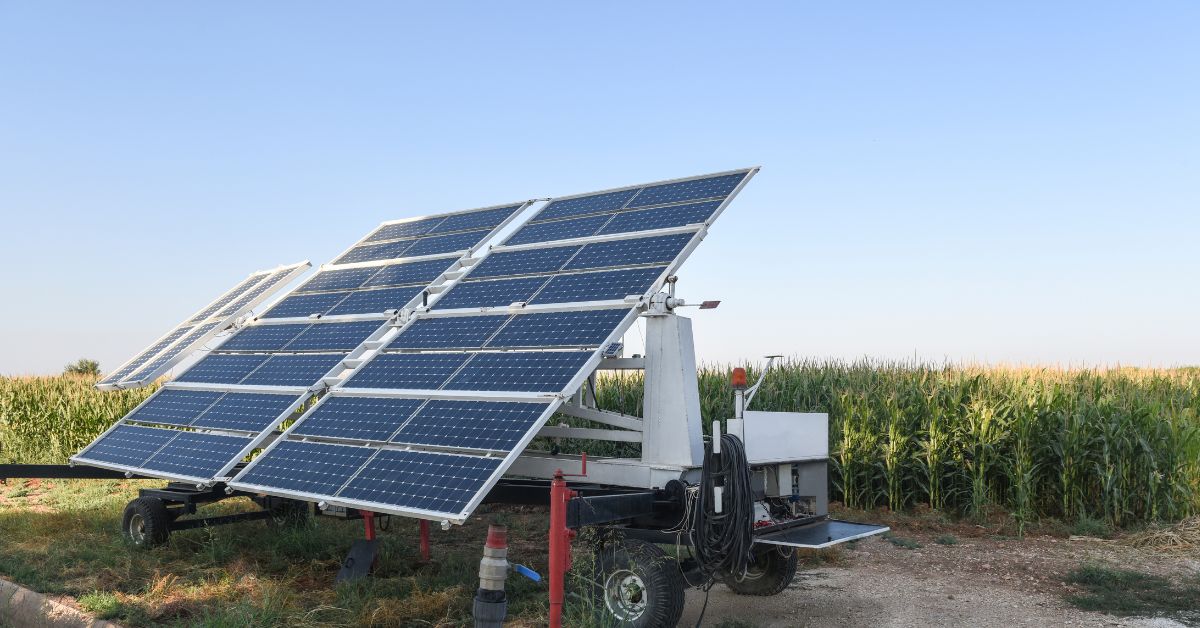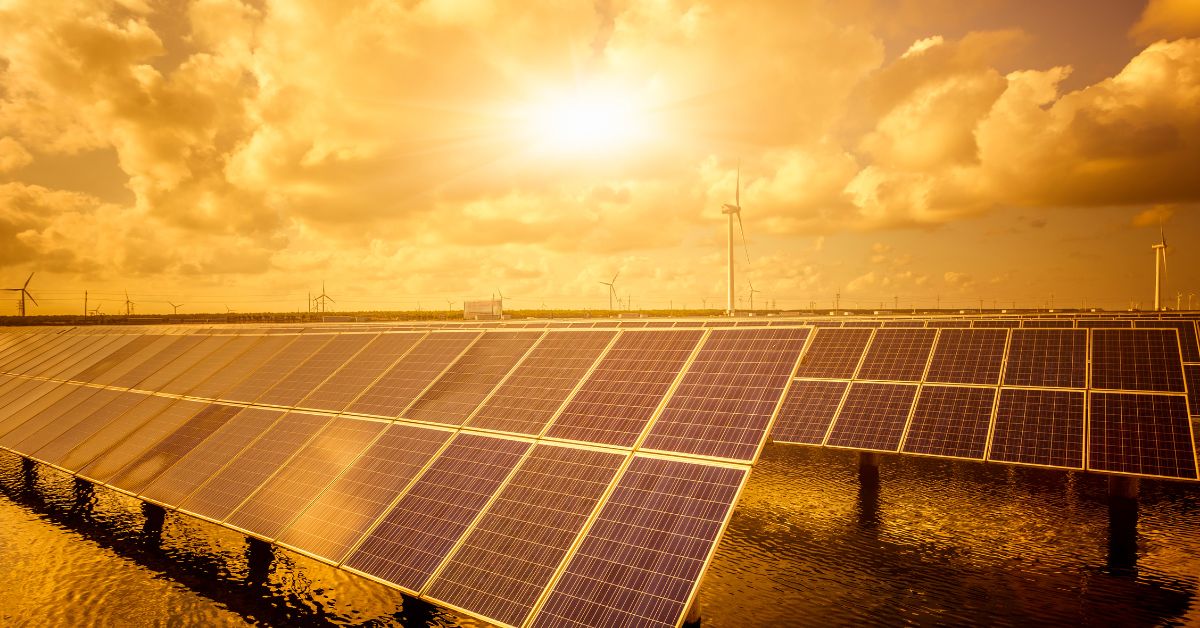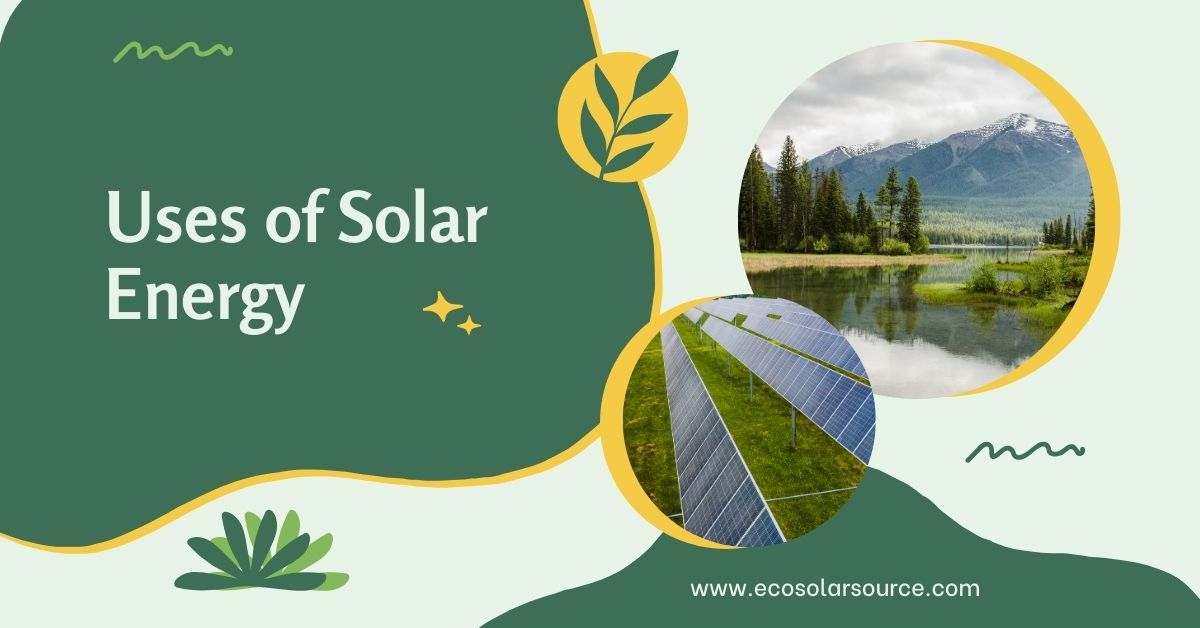Uses of Solar Energy
Know the details about the Uses of Solar Energy, Solar energy is a versatile, renewable power source harnessed from the sun’s rays, offering numerous applications across various sectors. It powers homes and businesses through photovoltaic (PV) solar panels, reducing reliance on traditional fossil fuels. Solar thermal energy heats water for domestic, industrial, and agricultural purposes.
In transportation, solar panels can power electric vehicles and even spacecraft. Solar-powered streetlights and irrigation systems support sustainable infrastructure and agriculture. Large-scale solar farms contribute to national grids, while off-grid solar systems provide energy to remote areas. Solar energy’s eco-friendly, cost-effective nature makes it an essential player in the global transition to clean energy.
Table of Contents
The Many Uses of Solar Energy: A Comprehensive Exploration
Solar energy has emerged as one of the most promising and sustainable forms of energy available today. As the world grapples with climate change, rising fuel costs, and environmental degradation, the importance of renewable energy sources like solar has never been more apparent. Solar energy harnesses the power of the sun’s rays to produce electricity, heat, and other forms of energy. In this post, we will explore over 3,000 words of information on the uses of solar energy, covering various sectors, technologies, and potential benefits. Whether you are a homeowner looking to save on energy bills or a policymaker interested in large-scale applications, this comprehensive guide will offer valuable insights into the multifaceted uses of solar energy.
Understanding Solar Energy
Solar energy refers to the radiant light and heat that the sun emits, which can be harnessed using different technologies. The sun is an incredibly powerful energy source, and solar technologies have advanced significantly to make the most out of this abundant resource.
There are two primary ways solar energy is captured:
- Photovoltaic (PV) Cells: These cells are convert to sunlight directly into electricity. Solar panels commonly found on rooftops or in solar farms utilize this technology.
- Solar Thermal Systems: These systems convert sunlight into heat, which can be used to warm water, air, or fluids to generate electricity or heat spaces.
Residential Uses of Solar Energy
One of the most common applications of solar energy is in residential homes. Homeowners across the world are installing solar panels to harness the sun’s power and reduce their electricity bills. Let’s explore the different ways solar energy can be used in homes.

a. Solar Panels for Electricity
The most common residential use of solar energy is through the installation of photovoltaic (PV) solar panels. These panels convert sunlight directly into electricity, which can then be used to power various household appliances. Solar energy systems can significantly reduce or even eliminate electricity bills, depending on the size of the system and the household’s energy consumption.
- On-Grid Solar Systems: These systems are connected to the local utility grid, allowing homeowners to sell excess electricity back to the grid in to the process known as net metering.
- Off-Grid Solar Systems: These systems operate independently of the grid, often incorporating batteries to store excess energy for use during nighttime or cloudy days.
b. Solar Water Heaters
Solar water heaters are another popular residential application of solar energy. These systems use solar collectors, usually mounted on rooftops, to absorb heat from the sun and transfer it to water stored in tanks. Solar water heaters can reduce the energy consumption associated with heating water by up to 60-80%, making them both eco-friendly and cost-effective.
c. Solar Air Heating
In colder climates, solar energy can be used to heat indoor spaces. Solar air heating systems, also known as solar space heating systems, capture heat from the sun and circulate it through the home. These systems are particularly beneficial in reducing heating costs during winter months.
d. Solar Lighting
Solar lighting is another simple yet effective use of solar energy. Solar-powered outdoor lights use small photovoltaic cells to convert sunlight into electricity, storing it in batteries for use at night. This technology is ideal for gardens, pathways, and other outdoor spaces where electrical wiring may be impractical.
e. Solar Ventilation
Solar ventilation systems, such as solar attic fans, are designed to improve air circulation in homes. These systems use solar energy to power fans that help reduce heat buildup in attics during the summer, lowering the cooling load on air conditioning systems and improving indoor comfort.
Commercial Uses of Solar Energy
Businesses and industries are also adopting solar energy solutions to reduce operational costs, minimize carbon footprints, and improve sustainability. Commercial solar applications are growing rapidly, with businesses of all sizes recognizing the benefits of harnessing solar power.
a. Solar Power Plants
Large-scale solar power plants use vast arrays of photovoltaic panels or concentrated solar power (CSP) systems to generate electricity for entire communities or industrial operations. These plants feed electricity into the grid, providing a significant portion of the renewable energy mix in many countries.
- Photovoltaic (PV) Solar Power Plants: These facilities consist of large fields of PV panels that capture sunlight and convert it directly into electricity.
- Concentrated Solar Power (CSP) Plants: CSP plants uses of mirrors or lenses to focus sunlight onto a small area, where the concentrated heat is used to generate steam, which drives turbines to produce electricity.
b. Solar-Powered Industrial Processes
Many industrial processes require significant amounts of energy, and solar power can be an ideal solution for reducing energy costs. For example:
- Solar Drying: Industries that require drying processes, such as agriculture, food production, and textiles, can benefit from solar drying systems that use heat from the sun to remove moisture.
- Solar-Powered Manufacturing: Some manufacturers are integrating solar energy into their operations by installing solar panels to power machinery, lighting, and other equipment.
c. Solar-Powered Data Centers
Data centers consume enormous amounts of electricity, primarily for cooling purposes. Solar energy is increasingly being used to power data centers, providing a renewable and cost-effective energy source while reducing the carbon footprint of these facilities.
d. Solar-powered EV Charging Stations
With the rise of electric vehicles (EVs), the demand for EV charging infrastructure has grown. Solar-powered EV charging stations offer a clean and sustainable way to power electric vehicles, reducing reliance on fossil fuels and supporting the growth of the EV market.
Agricultural Uses of Solar Energy
The agricultural sector has found numerous innovative ways to use solar energy, from powering irrigation systems to improving crop yields. As farmers seek to reduce their dependence on fossil fuels and improve efficiency, solar energy has become a vital tool in modern agriculture.

a. Solar-Powered Irrigation Systems
Watering crops is a labor-intensive and energy-demanding process, particularly in areas where electricity is limited. Solar-powered irrigation systems use photovoltaic panels to pump water from wells, rivers, or lakes, providing an efficient and eco-friendly solution for farmers.
b. Solar Greenhouses
Greenhouses are essential for growing crops in controlled environments, particularly during colder seasons. Solar greenhouses use solar energy to maintain optimal temperatures, reducing the need for artificial heating and lighting.
c. Solar Crop Drying
Drying crops, such as grains, fruits, and vegetables, is an essential step in food preservation. Traditional drying methods often rely on energy-intensive processes. However, solar crop drying systems use solar energy to remove moisture from crops, providing a cost-effective and environmentally friendly alternative.
d. Solar Fencing
Solar fencing is an innovative use of solar energy in agriculture. Solar-powered electric fences help farmers protect their crops and livestock from wildlife, eliminating the need for conventional power sources and offering a sustainable solution for rural areas.
Transportation Uses of Solar Energy
The transportation sector is another area where solar energy is making significant strides. Solar-powered transportation systems can reduce reliance on fossil fuels, minimize emissions, and promote sustainability.
a. Solar-Powered Cars
Solar-powered cars use photovoltaic cells to convert sunlight into electricity, which powers the vehicle’s motor. While solar cars are still in the experimental stage, advances in solar technology are bringing this concept closer to reality.
b. Solar Buses and Trains
Public transportation systems are also exploring solar energy as a means of reducing fuel costs and emissions. Solar-powered buses and trains can run on electricity generated by solar panels installed on the vehicle or at charging stations.
c. Solar Planes
Solar-powered planes are an exciting innovation in the field of transportation. These aircraft are designed to fly using only solar energy, with photovoltaic cells embedded in their wings. Solar planes could potentially revolutionize air travel by offering a cleaner and more sustainable alternative to conventional planes.
Environmental and Societal Benefits of Solar Energy
The widespread adoption of solar energy has far-reaching environmental and societal benefits. As the world continues to transition to renewable energy sources, solar power is playing a pivotal role in reducing greenhouse gas emissions and promoting sustainable development.
a. Reducing Carbon Emissions
One of the most significant benefits of solar energy is its ability to reduce carbon emissions. Unlike fossil fuels, which release harmful pollutants into the atmosphere when burned, solar energy produces electricity without emitting greenhouse gases. By replacing coal, oil, and natural gas with solar power, we can dramatically reduce our carbon footprint and combat climate change.
b. Energy Independence
Solar energy also promotes energy independence by reducing reliance on imported fuels. Countries with abundant sunlight can harness solar power to meet their energy needs, reducing their dependence on foreign oil and gas.
c. Job Creation
The growth of the solar energy industry has led to the creation of millions of jobs worldwide. From manufacturing and installing solar panels to maintaining and operating solar power plants, the solar sector provides employment opportunities for people of all skill levels.
d. Providing Power to Remote Areas
Solar energy is particularly beneficial in providing electricity to remote and underserved areas. In regions where traditional power infrastructure is lacking, solar panels and off-grid systems can provide reliable and affordable electricity, improving the quality of life for residents and fostering economic development.
Challenges and Future Potential of Solar Energy
While solar energy has numerous advantages, there are still challenges that need to be addressed to maximize its potential.

a. Intermittency
One of the main challenges of solar energy is its intermittency. Since solar power generation depends on sunlight, it is not available at night or during cloudy days. However, advances in energy storage technologies, such as batteries, are helping to mitigate this issue by storing excess energy for use when the sun isn’t shining.
b. High Initial Costs
Although the cost of solar panels has decreased significantly over the past decade, the initial investment required to install a solar energy system can still be high. However, government incentives, tax credits, and falling equipment costs are making solar energy more accessible to homeowners and businesses.
c. Land Use
Large-scale solar power plants require significant amounts of land, which can lead to conflicts with other land uses, such as agriculture or conservation. However, innovative solutions, such as floating solar farms and dual-use solar systems that allow for both energy generation and farming, are helping to address this challenge.
FAQs About Uses of Solar Energy
Q1. What are the primary uses of solar energy?
Solar energy is mainly used for electricity generation (via solar panels), heating (solar water heaters), and lighting (solar-powered lights). It also powers devices and vehicles.
Q2. How do solar panels generate electricity?
Solar panels convert sunlight into electricity using photovoltaic (PV) cells, which generate direct current (DC) electricity. An inverter then converts this to alternating current (AC) for home or business use.
Q3. Can solar energy power my entire home?
Yes, a properly sized solar system can generate enough electricity to meet your home’s energy needs. Battery storage or grid connections help ensure continuous power during non-sunny periods.
Q4. What are the benefits of using solar energy?
Solar energy is renewable, reduces electricity bills, lowers carbon footprints, and requires little maintenance. It can also increase property value.
Q5. Can solar energy be stored?
Yes, solar energy can be stored using battery systems, which store excess electricity for later use, ensuring power availability even when sunlight is not present.
Q6. Is solar energy cost-effective?
While the upfront cost can be high, solar energy can significantly reduce electricity bills over time, offering long-term savings. Tax incentives and rebates can also make it more affordable.
Q7. How long do solar panels last?
Most solar panels have a lifespan of 25 to 30 years. Their efficiency decreases slightly over time, but they still produce significant energy after this period.
Q8. Can solar energy work on cloudy or rainy days?
Solar panels still work during cloudy or rainy days, though they generate less energy compared to sunny days. The efficiency depends on the cloud cover and the quality of the solar panels.
Q9. Do solar panels require maintenance?
Solar panels require minimal maintenance, primarily periodic cleaning to remove dust or debris. It’s also recommended to have an annual professional check to ensure optimal performance.
Q10. What are solar water heaters, and how do they work?
Solar water heaters use the sun’s energy to heat water for household or commercial use. They employ solar collectors to absorb sunlight, which then heats water stored in a tank.
Q11. Can solar energy be used for transportation?
Yes, solar energy can power electric vehicles (EVs) either directly or by charging the EVs through solar-powered charging stations. Solar energy is also used in some solar-powered vehicles and boats.
Q12. Is it possible to sell excess solar energy back to the grid?
Many areas have net metering policies where homeowners can sell excess electricity generated by their solar panels back to the grid, earning credits or payments.
Q13. How does solar energy impact the environment?
Solar energy reduces reliance on fossil fuels, lowering greenhouse gas emissions and air pollution. It’s a clean, sustainable energy source with minimal environmental impact during operation.
Q14. Can businesses benefit from solar energy?
Yes, businesses can reduce operational costs by installing solar energy systems. They can also take advantage of tax incentives and demonstrate environmental responsibility.
Q15. Are there any limitations to solar energy?
Solar energy is weather-dependent, requires space for panels, and has high initial installation costs. Energy storage systems can also be costly. However, advancements are addressing many of these challenges.
Solar energy is one of the most versatile and sustainable sources of power available today. From residential and commercial applications to agricultural and transportation uses, the potential of solar energy is vast and largely untapped. As technology continues to advance, solar energy will play an increasingly important role in meeting the world’s growing energy demands while reducing our environmental impact.
The future of solar energy looks bright, and its uses will only expand as more people, businesses, and governments recognize its immense benefits. By investing in solar energy today, we can pave the way for a cleaner, greener, and more sustainable future for generations to come.
Click here to learn more about Uses of Solar Energy
Click here to learn more about Solar Panel Manufacturers in The World

